This is a guest post by Eolia Disler at La Cité des Vents (a blog in both French and English). I love this post because Gothic architecture might be my very favorite art period in all of art history. It is a close call, but it’s definitely up there! I also have a big announcement coming up on the blog in a couple of weeks, and this post is a big hint about what it might be! For those of you on my newsletter list, you’ve already gotten a couple of hints, so you can add this to those. 🙂 A huge thank you to Eolia. Please go visit her site and see all the wonderful cultural ideas and insight she has over there.
In September 2014, we spent a few days in Paris (my husband, my two children, and I) and for once we had the joy to be able to visit the interior of the cathedral Notre-Dame of Paris. When we lived in the Paris area, each time we wanted to show this church to my son this treasure of the Gothic French patrimony, a very long queue was waiting on the parvis.
This time, at 1:45pm, we had only to wait 3 minutes, and we were in! My two kids gazed at the impressive high ceiling, the colorful stained glasses (they loved the ones with blue background), the statues and other sculptures and of course the models showing the cathedral that are exposed in one of aisle (near the souvenir shop).
Here is a quick account of that sunny early afternoon:

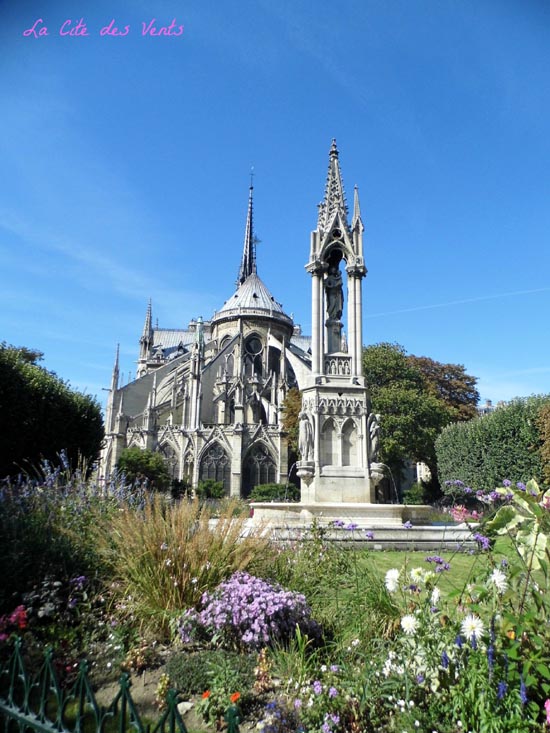
There are three spots for the children to play, and as they are under the trees, it’s a great place to have a rest when the weather is a bit hot. In 2012, the park won the 3rd place in the category Big gardens/parks of Paris for its floral decoration.
In the middle of the park, the fountain de la Vierge, sculpted in 1845 by Vigoureux in a Gothic style, complements beautifully the sight you have of the lacework and the flying buttresses’ abutments.

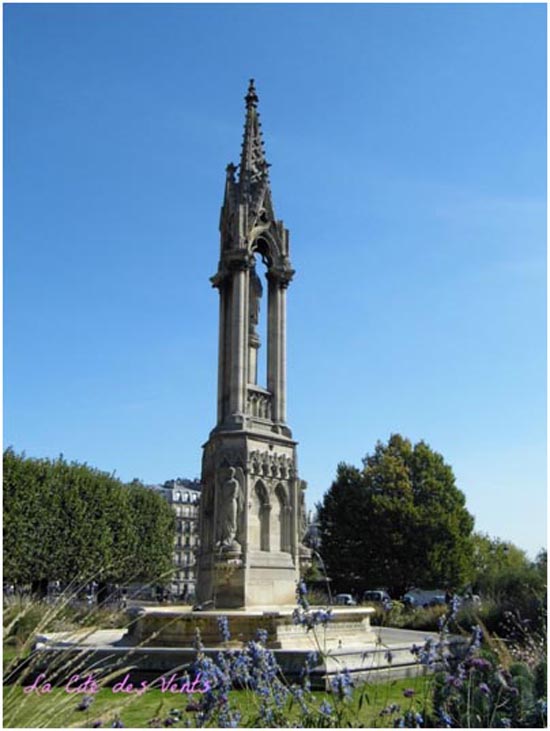 Here’s another view of the Fontaine de la Vierge. Right across the street and at the end of the island, you have the smaller square de l’Ile-de-France where a memorial for the Martyrs of the Deportation has been erected.
Here’s another view of the Fontaine de la Vierge. Right across the street and at the end of the island, you have the smaller square de l’Ile-de-France where a memorial for the Martyrs of the Deportation has been erected.
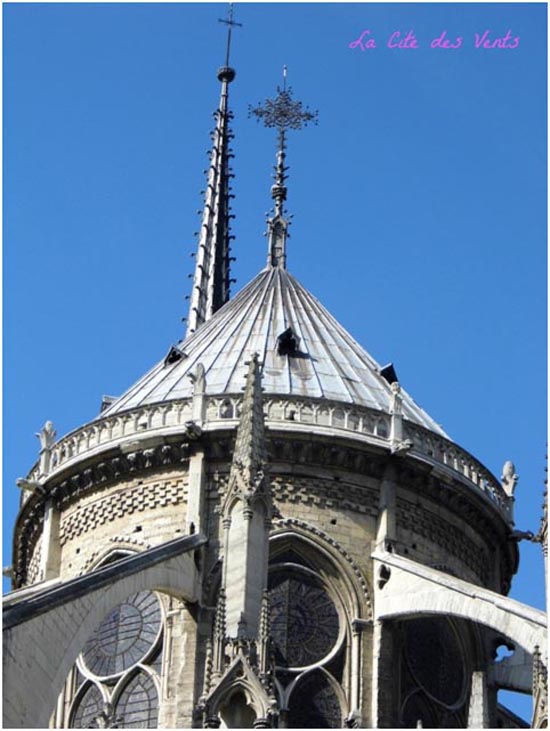 Ah! This roof, this spire and these stones looking like polished jewels.
Ah! This roof, this spire and these stones looking like polished jewels.
After a few rounds on the games, we gathered the kids and walk to the entrance of the cathedral, on the parvis. As you see in the photo below, there were not many people for such a lovely day (no, I’m not joking!) and I had the time to show to my nearly 6 years old son the portals and the rest of the west façade. I didn’t explain all the details; he was too busy annoying his sister. But have a look at the two links above, you will learn a great deal!
The cathedral started to be built in 1163 and was completed a century later. Four architects supervised the site. During the 19th Century, Viollet-le-Duc completed some restorations and added the spire. The cathedral is dedicated to Mary, mother of Jesus, who is an important figure of Catholicism.
The Kings gallery up the portals (in the middle, the Portal of the Last Judgement), and in front of the rose the statues of the Virgin Mary with Jesus as a child between two angels. You can also see the statues of Adam and Eve on the same gallery as the Virgin Mary. The west façade has been built between 1200 and 1250 AD by two different architects.
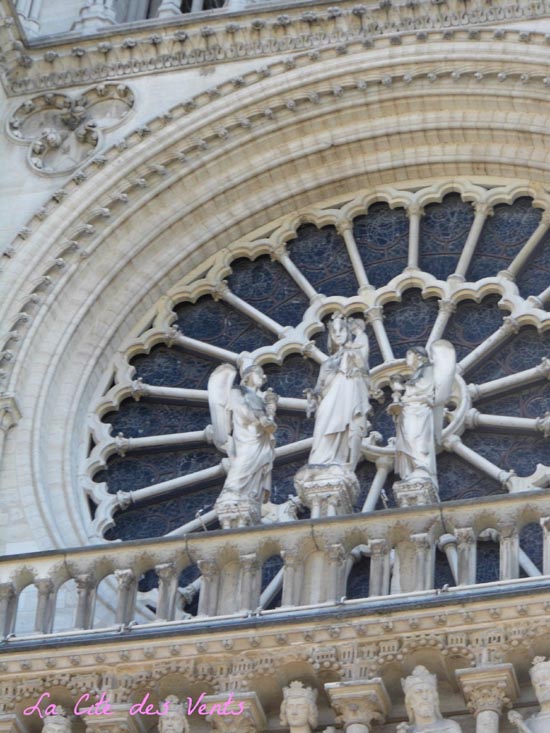 The Virgin Mary presenting the child Jesus.
The Virgin Mary presenting the child Jesus.

Portal of the Last Judgement: will you go to the Paradise (left side of the picture, but right side of Jesus) or to Hell (on the right side of the picture, but the left side of Jesus)? Don’t forget to look at all the angels surrounding the scene!
I love the inside of this cathedral: when you come into the building, you’re stumped by the height of the ceiling. You feel small, and that’s totally what was intended by the architects! It’s to make the believers know that they are just tiny specks in the eyes of God and eternity. Not that I really believe in this conception, but it was how the Catholic Church thought in the Middle Age and wanted their parishioners to think too. The more high you reach, the more light you will find. Heavens with the stained glasses and Earth with the more dark parts of the church, big pillars for the mortals and light arcs for where the angels dwell.
The whole architecture of the cathedral is meant to represent a specific conception of the order of the world, the way humans have to behave to be redeemed and how God manage the Universe.
 The official website of the Cathedral is full of information: history, architecture, practical information, spiritual topics and daily life of the church, visits, etc. You will find many photos and pictures, historic facts, and architectural drawings. But what your kid will mostly enjoy is the special website for the children! Yep, they dedicated pages for the young visitors! You can even send drawings of the cathedral and they will be published on the website.
The official website of the Cathedral is full of information: history, architecture, practical information, spiritual topics and daily life of the church, visits, etc. You will find many photos and pictures, historic facts, and architectural drawings. But what your kid will mostly enjoy is the special website for the children! Yep, they dedicated pages for the young visitors! You can even send drawings of the cathedral and they will be published on the website.
I can’t finish my post without talking of one of the best attraction for the kids (and the grown-ups too!): the models of the cathedral. There are three of them. When you don’t have the ability of flight, you can’t examine the whole building. However, with these models, you can inspect all the aspects of the exterior structure. You will also observe how the cathedral was built with a historical reenactment of the construction!
If you want to see more pictures about Notre-Dame, you can look at these links:
- Notre-Dame of Paris, by Travel Yes Please! Beautiful pictures and historical information.
- The River Seine, Paris, France by the Wanderblogger A journey on the river Seine in Paris.
- Notre-Dame, by Gunters abroad. Photos of the interior of the cathedral.
Eolia Disler is a blogger at La Cité des Vents, her blog in both French and English! She writes about her family life as a French mom expat near Frankfurt, Germany.



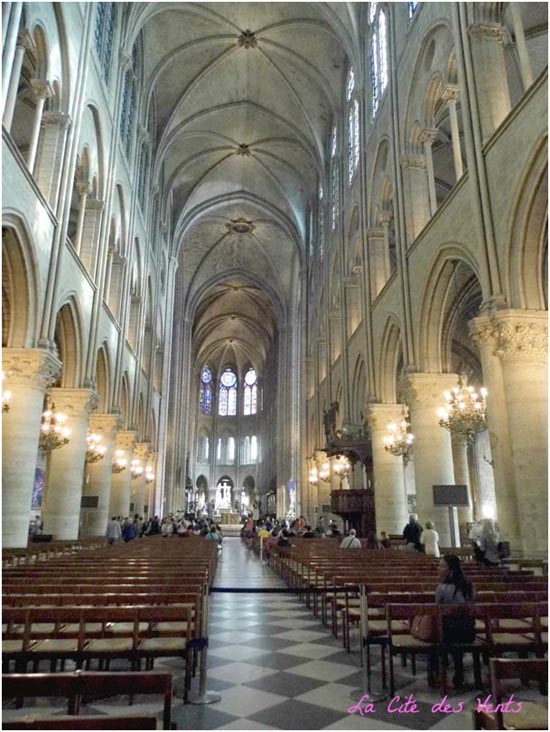
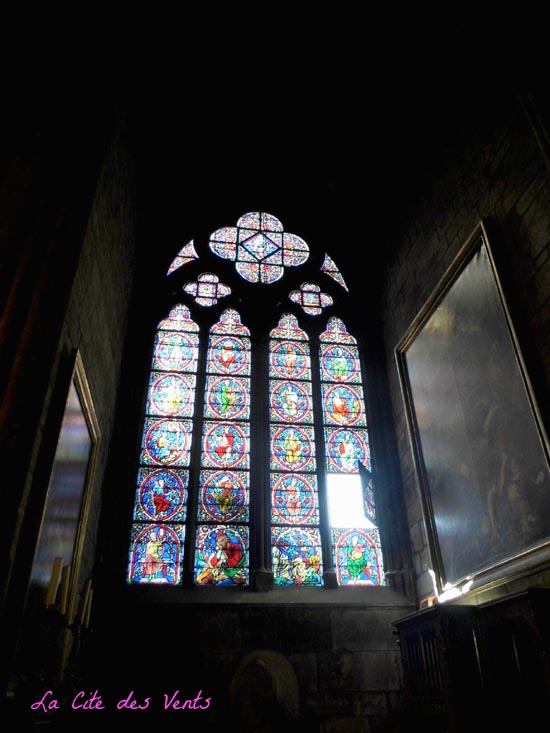
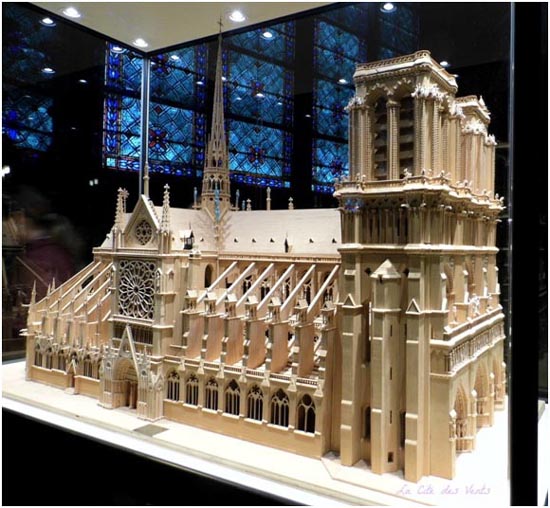


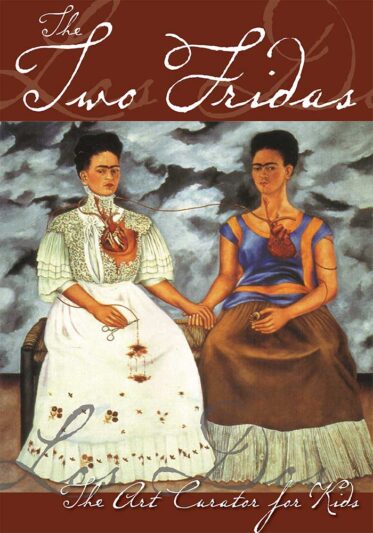


Leave a Comment